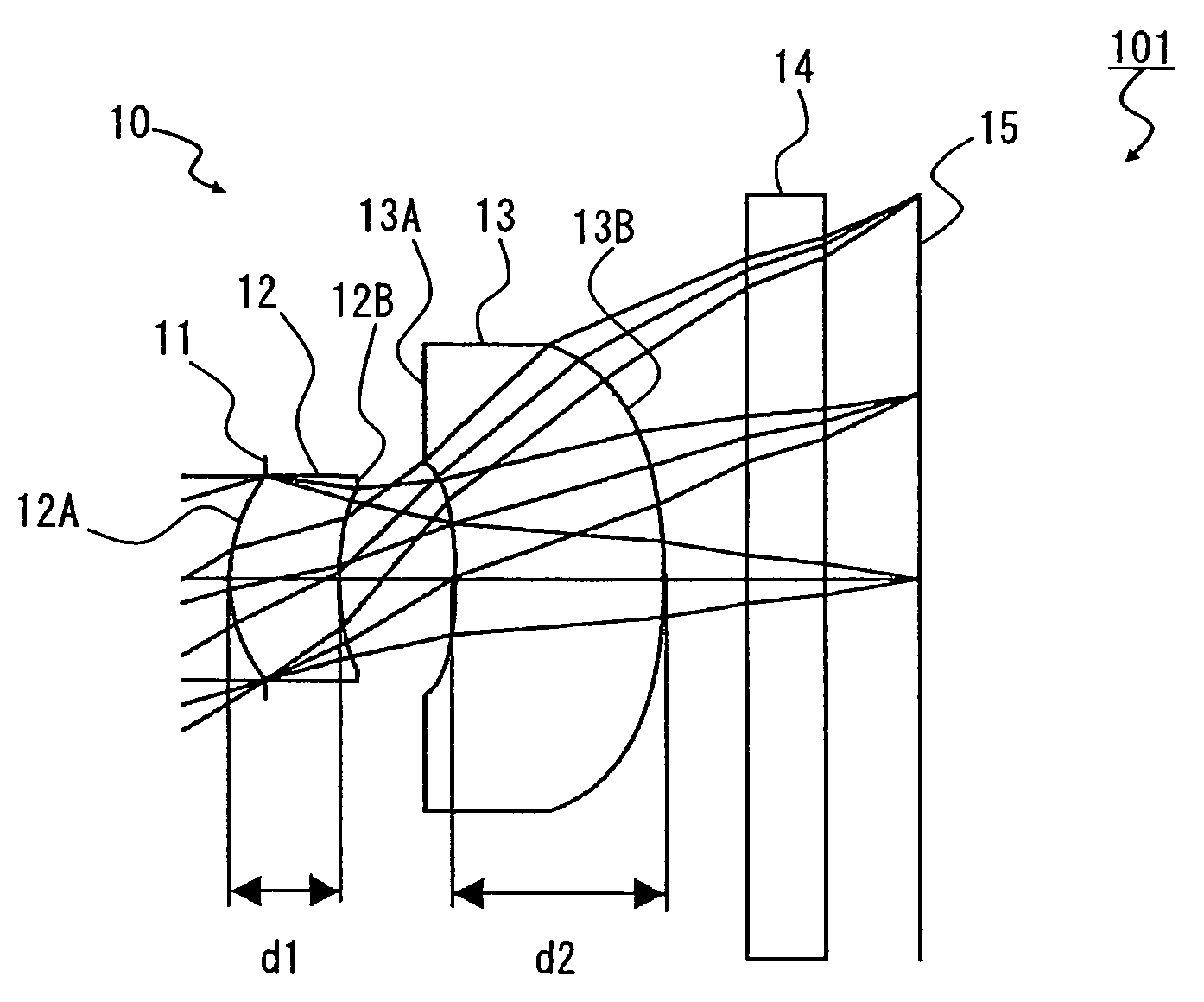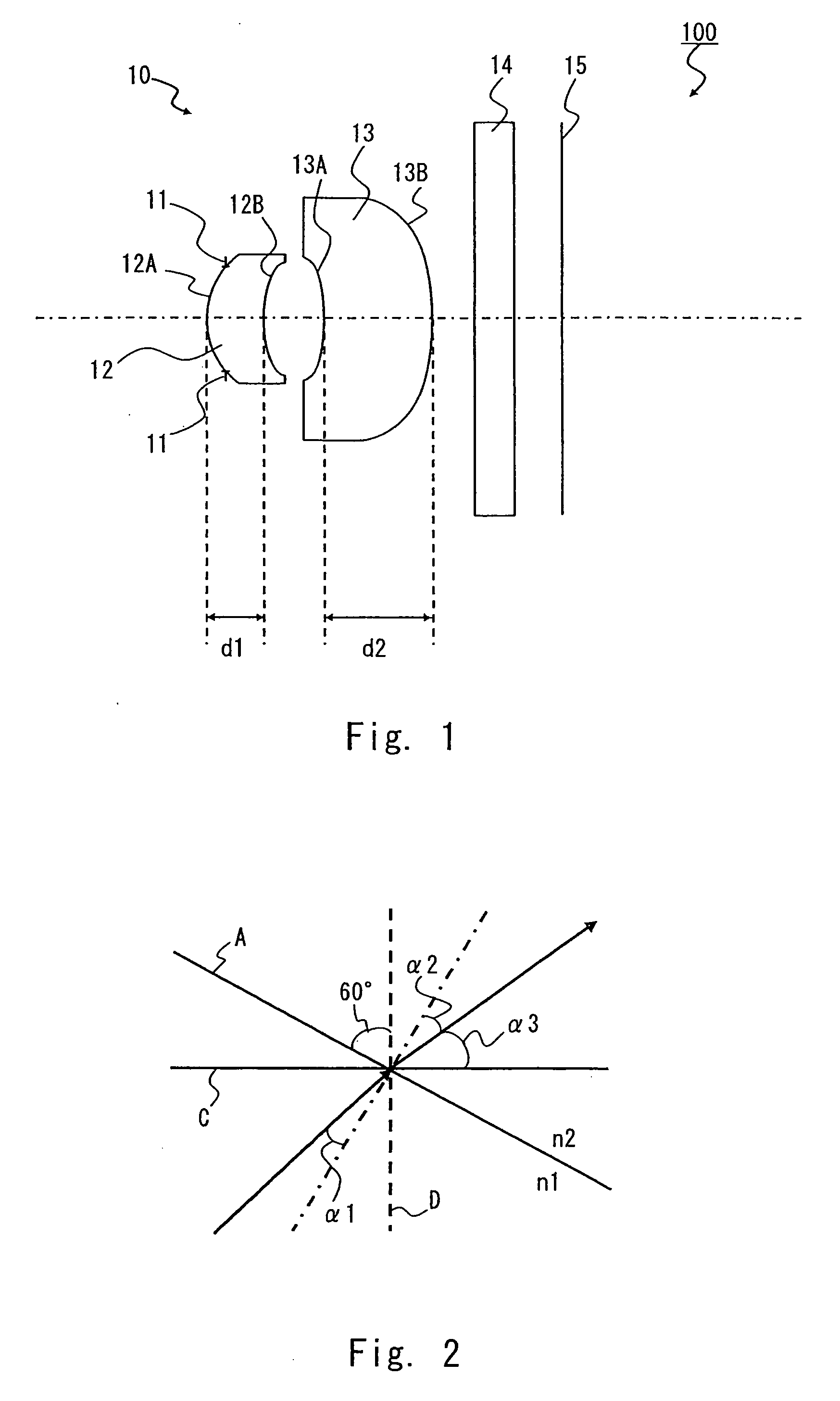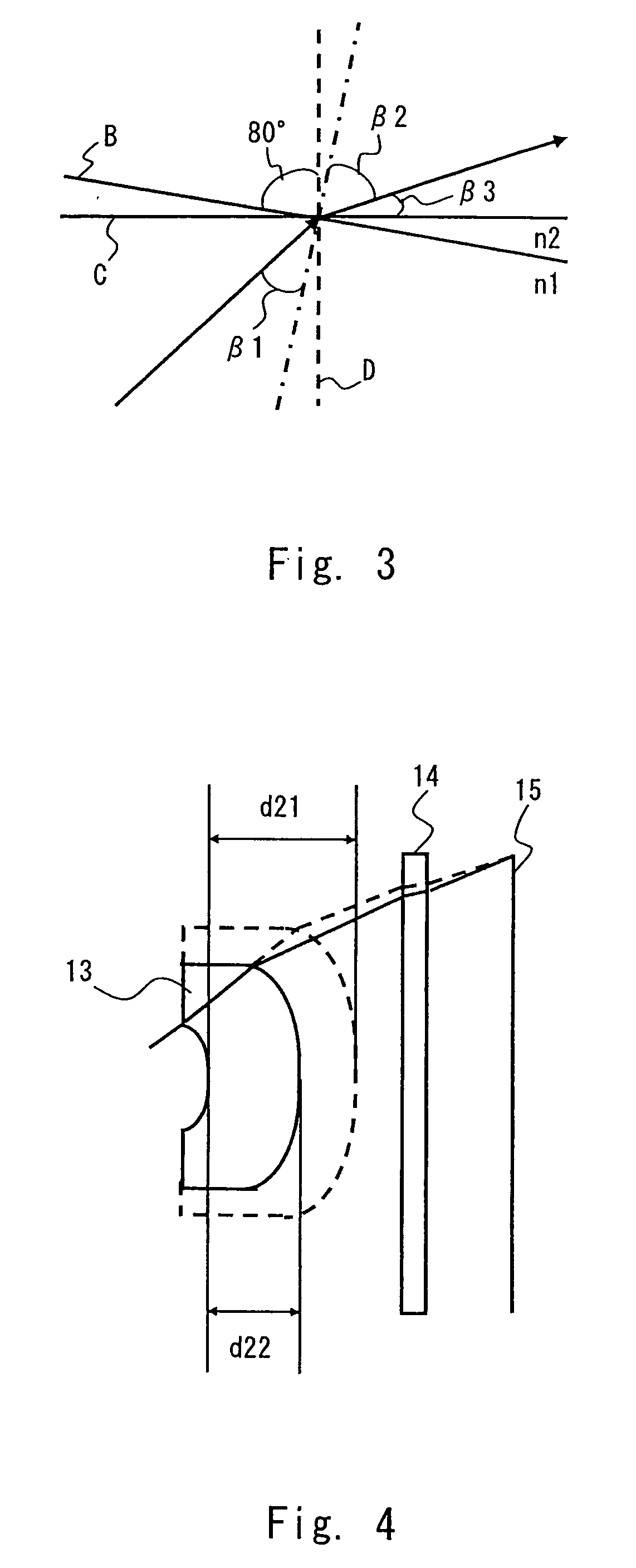Imaging lens unit and camera module
a technology of imaging lens and camera module, which is applied in the field of imaging lens unit and camera module, can solve the problems of increasing the optical path length, difficult to capture high-quality images, and difficult to reduce the size of imaging equipment, so as to achieve high-quality images, reduce optical path length, and reduce optical path length
- Summary
- Abstract
- Description
- Claims
- Application Information
AI Technical Summary
Benefits of technology
Problems solved by technology
Method used
Image
Examples
example 1
[0064]An example 1 of the present invention is described hereinafter. FIG. 5 is a schematic side view of a camera module 101 according to the example 1. In FIG. 5, from the object side, the aperture diaphragm 11 is referred to as a stop surface (ST), the object-side lens surface 12A of the first lens 12 is a second surface, the image-side lens surface 12B of the first lens 12 is a third surface, the object-side lens surface 13A of the second lens 13 is a fourth surface, the image-side lens surface 13B of the second lens 13 is a fifth surface, an object-side surface of the cover glass 14 is a sixth surface, an image-side surface of the cover glass 14 is a seventh surface, and an image pickup surface of the image sensor 15 is an eighth surface. Although a resin is used as a lens material of both the first lens 12 the second lens 13 in this example, a glass may be used instead.
[0065]The tables 1 and 2 show lens data according to the example 1.
[0066]The table 1 shows the curvature radiu...
example 2
[0074]An example 2 of the present invention is described hereinafter. FIG. 7 is a schematic side view of a camera module 102 according to the example 2. As shown in FIG. 7, the elements of the camera module 102 according to the example 2 are substantially identical to those of the camera module 101 according to the example 1 except for a first lens 22 and a second lens 23. The substantially identical elements are denoted by the same reference symbols and not described below. Although a resin is used as a lens material of both the first lens 22 the second lens 23 in this example, a glass may be used instead.
[0075]Like the example 1, in FIG. 7, from the object side, the aperture diaphragm 11 is referred to as a stop surface (ST), an object-side lens surface 22A of the first lens 22 is a second surface, an image-side lens surface 22B of the first lens 22 is a third surface, an object-side lens surface 23A of the second lens 23 is a fourth surface, an image-side lens surface 23B of the ...
PUM
 Login to View More
Login to View More Abstract
Description
Claims
Application Information
 Login to View More
Login to View More - R&D
- Intellectual Property
- Life Sciences
- Materials
- Tech Scout
- Unparalleled Data Quality
- Higher Quality Content
- 60% Fewer Hallucinations
Browse by: Latest US Patents, China's latest patents, Technical Efficacy Thesaurus, Application Domain, Technology Topic, Popular Technical Reports.
© 2025 PatSnap. All rights reserved.Legal|Privacy policy|Modern Slavery Act Transparency Statement|Sitemap|About US| Contact US: help@patsnap.com



